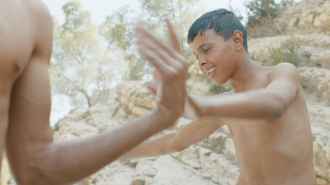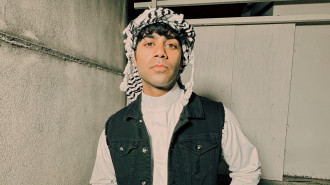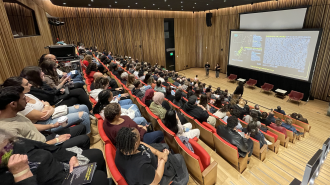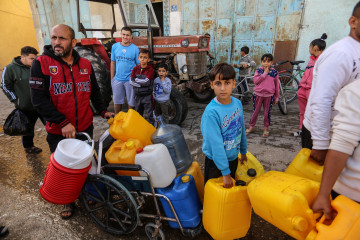
Drop by drop: Israel's occupation of Gaza's water

On his knees and with his small hand, he tries to scoop a few drops from the mirky puddle outside one of Gaza’s many school shelters.
Another child in another shelter rejoices as he holds up a bucket to collect what he can of the unseasonal rain, thanking God for pouring down help.
"Today, Israel controls 80% of water reserves in the occupied West Bank and the permits, as per the Military Order, continue to be nearly impossible to obtain"
Neither child was engaging in a splash game, but tempting fate for survival amid Gaza’s unprecedented humanitarian disaster.
This is all due to Israel’s siege, cutting off and destroying water sources in the Strip, alongside the relentless bombing, mass killings, and displacements.
Before the war, never did Israel openly drive Palestinians into a situation where they could die from thirst. Typically, it slowly diminished their water resources and restricted access to what was left of it.
During the First Intifada, over thirty years ago, we routinely huddled up around the only clean water tap in the refugee camp, armed with formerly fuel containers and the will to withstand the heat of the scorching summer sun. It was a daily practice that the tap became a place to hang out and socialise, with the additional bonus of squidgy ground and dirty feet.
|
Our homes had running water, but it mostly contained high levels of salinity. It was undrinkable straight out of the tap and sometimes tasted like dechlorinated soup. It was only suitable for cleaning, washing, and cooking after it had been boiled.
Most of us were born into that situation and almost never had another frame of reference to compare it with and see its travesty. The rise in awareness that came with the Intifada drove a dagger into the ‘drop-by-drop existence,’ exposing the convoluted system of oppression lurking behind it.
Today, we see it as part of Israel’s settler-colonial reality, the so-called ‘water occupation’ — the colonisation of and unfair usage of native water.
Soon after Israel had occupied the West Bank and Gaza in June 1967, the Israeli authorities assumed full control over all water resources and water-related infrastructure in the occupied territories.
That mostly came through laws and military orders, and occasionally, as de facto takeovers by Jewish settlers. The army also designated some of the water-rich areas — e.g. the Jordan Valley - ‘restricted military zones.’
Military Order 158 was enacted four months into the occupation. It banned Palestinians from constructing any new water installations without a permit from the Israeli army.
"Israel claims ownership of even rainfall, extending its control — as some commented cynically — to the clouds above Palestinians"
Today, Israel controls 80% of water reserves in the occupied West Bank and the permits, as per the Military Order, continue to be nearly impossible to obtain.
Palestinians are systematically prevented from drilling new wells, deepening existing wells, or installing pumps.
|
Particularly disturbing is the ban on the collection of rainwater and the possession of rainwater harvesting cisterns. A 2011 report submitted to the UN by the Emergency Water, Sanitation and Hygiene Group (EWASH) — a coalition of almost 30 organisations working in the water and sanitation sector in the occupied Palestinian territory, and Al-Haq — found that the Israeli authorities deem rainwater a ‘a state property.’ This means that Israel claims ownership of even rainfall, extending its control — as some commented cynically — to the clouds above Palestinians.
This translates to radical disparities between Israelis and Palestinians in terms of water consumption, a practice on par with the political and social injustices that separate the two peoples.
Think of the fact that in 2020 Israelis on average consumed ten times the amount of water consumed by Palestinians in the West Bank– although the Israeli population is only three times larger. The gap grows significantly wider when Palestinian West Bankers not hooked up to the water grid are accounted for.
This injustice goes well beyond statistics into the realm of absurdities. One, as noted above, is requiring a permit to access water and then never granting it.
Another is stealing Palestinian water and then selling it back to Palestinians at higher fees than the average market value, to a population with a much lower standard of living than Israelis, no less.
A manifestation of this water colonisation is the black-and-white water tanks ‘decorating’ the roofs of almost every Palestinian home across the West Bank.
They are filled when their water is cut off for days at a time. Such tanks are rarely seen in the surrounding illegal Jewish settlements where water is available 24/7 and is never cut off because of ‘shortages.’
These water tanks are also a prominent feature that towers over Gazan homes, yet the story behind them is more tragic than that of the occupied West Bank.
"Many Gazans, meanwhile, have to juggle having to find shelter to survive the indiscriminate bombing and needing to venture out into dangerous zones to look for food and water"
Gazans relied for decades on the contaminated and quickly depleting Coastal Aquifer, the Strip’s only freshwater source. According to the UN, 96% of the water in Gaza's sole underground aquifer is not fit for human consumption. This issue, among others, has been cited in a UN 2018 report as a major obstacle that would render Gaza unlivable by 2020.
Before the current war, Gazans received their water from three sources: three seawater desalination plants that provide 7% of Gaza’s clean water; three pipelines from Israel, totalling 13% of the Strip’s needs; and a system of nearly 300 wells and boreholes to extract the water from the coastal aquifer and are treated by small desalination units.
Surely, one would think, the core, consistent problem has been the arid nature of the Gazan coastline. To some extent, it is. However, this potentially solvable problem has been systematically reutilised as a political tool to tighten the Gaza blockade, ironically by the state that takes pride in its ‘world-class water management and irrigation systems.’ Water, or rather its scarcity - almost like everything else within Israel’s domain of control - has been weaponised against the local population.
|
Sixteen years of blockade and several rounds of hostilities have crippled the economy and, with it, undermined Gaza’s ability to improve its water situation.
Oxfam, for instance, reported that the materials necessary to develop water and sanitation infrastructure to meet the needs of the growing population are routinely restricted by the Israeli authorities.
Nearly 3,000 items required to build infrastructure are yet to receive approval to enter the Strip. Oxfam also found that, before this war, only 16% of the items submitted for approval through the water sector had actually made it into Gaza. This is an alarming rate that reflects the oppressive nature of the blockade itself.
With the first Israeli bomb dropped on Gaza on October 7, the already politicised water situation was turned into a weapon of mass killing, albeit a gradual and less visible one compared to the bombing campaign.
Yoav Gallant, Israel’s Minister of Defence, ordered water going to Gaza from Israel to be cut off. Notice that it took Israel only a turn of a valve on the Israeli side of the border to trigger a humanitarian crisis for 2.3 million people.
That was followed by weeks of deliberate bombing of every accessible water source across the Strip, even targeting queues of people outside privately owned water pumps, especially in the north of Wadi Gaza. Fuel was banned, rendering the remaining water and sanitation facilities inoperable.
Today, after nearly two months of the onslaught and the complete siege of the Gaza Strip, the average consumption of water for all purposes has fallen from 15-20 to 2-3 litres a day per person.
Most of this water is not clean or safe to drink. Some residents have turned to brackish water, which is high in salinity; water intended for agricultural uses, which may contain pesticides or chemicals; and primitively distilled seawater.
Three litres of water is the very minimum a person needs to drink in order to avoid health problems related to dehydration, including organ damage and failure.
With every day that passes, especially for the people trapped in the midst of Israel’s ground invasion in Northern Gaza, the threat of dying by thirst is growing to be a real possibility.
For everyone else across the South, residents and displaced ones from the North, the diminishing water sources are increasing the risk of transmittable diseases that could prove fatal for children especially.
Many Gazans, meanwhile, have to juggle having to find shelter to survive the indiscriminate bombing and needing to venture out into dangerous zones to look for food and water.
Whichever aid that Israel allowed into the Strip, due to international pressure, remains far less than the bare minimum and does not reach everyone. In certain areas, like Beit Hanoun in the North, money has become valueless as there is not much to buy to survive.
Dr Emad Moussa is a Palestinian-British researcher and writer specialising in the political psychology of intergroup and conflict dynamics, focusing on MENA with a special interest in Israel/Palestine. He has a background in human rights and journalism, and is currently a frequent contributor to multiple academic and media outlets, in addition to being a consultant for a US-based think tank
Follow him on Twitter: @emadmoussa
![Today, average consumption of water for all purposes has fallen from 15-20 to 2-3 litres a day per person [Getty Images]](/sites/default/files/styles/medium_16_9/public/2023-11/GettyImages-1806087938.jpg?h=199d8c1f&itok=ns9L5LOH)
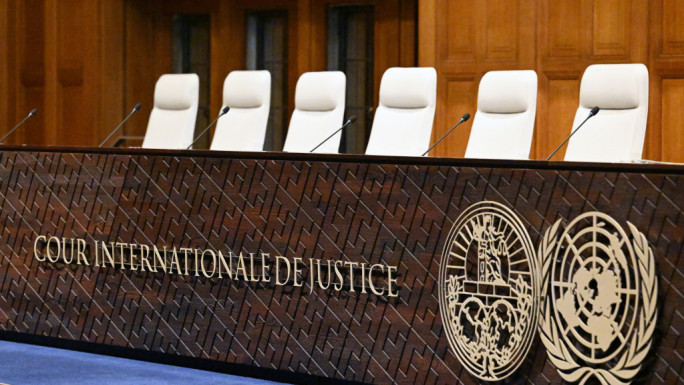
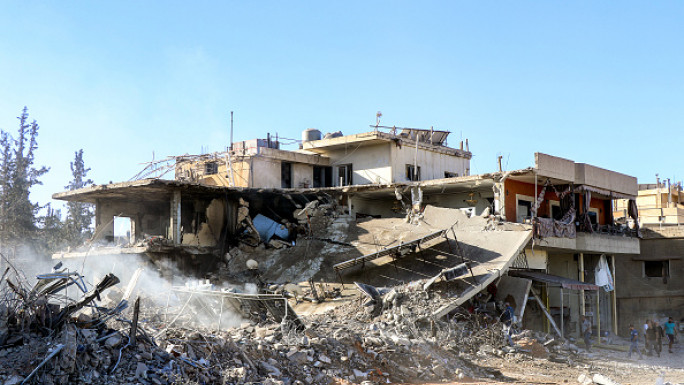
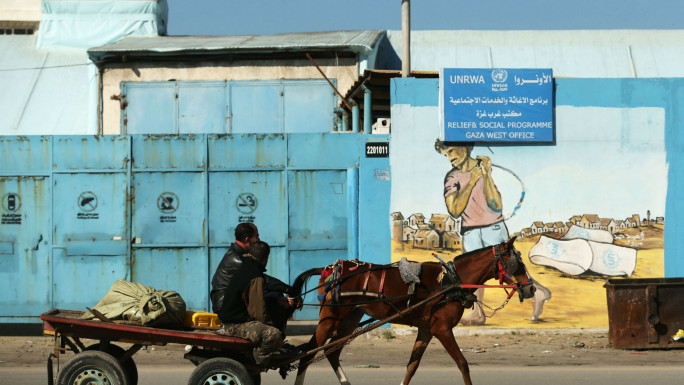

 Follow the Middle East's top stories in English at The New Arab on Google News
Follow the Middle East's top stories in English at The New Arab on Google News
